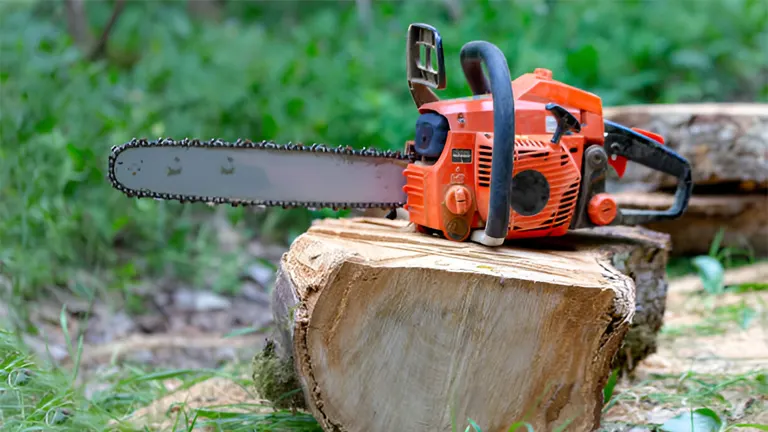5 Maintenance Tips for Forestry Machines
- September 1, 2024
- 0 comment
Forestry machines are key tools in the logging industry, used to cut, move, and process timber. These machines work in tough conditions, such as thick forests and rough terrains, handling heavy tasks every day. Keeping them running well is crucial for logging operations, which is why regular maintenance is so important for those who use and own these machines.

Without regular care, even the strongest forestry machines can wear down, leading to unexpected breakdowns and expensive repairs. Skipping maintenance not only makes the machines less efficient but also shortens their working life, affecting how much work they can do and increasing costs.
By taking the time to maintain these machines, you can keep them in good shape and ready to handle the challenging tasks they face in the logging industry. Here are five essential maintenance tips to keep your forestry equipment in top condition.
1. Regularly Inspect and Clean the Forestry Machines
Forestry machines operate in tough environments, often in mud, dust, and debris. Over time, this buildup can cause significant wear and tear. Regular inspections allow you to catch problems early before they become serious issues.
Start by performing a thorough visual inspection of the entire machine. Look for any signs of damage, such as cracks, loose bolts, or worn-out parts. Pay special attention to areas like the undercarriage, where mud and debris can accumulate and cause corrosion.
Cleaning the machine after each use is equally important. Dirt, sap, and other residues can clog important components and reduce the machine’s efficiency. Use a pressure washer to clean the exterior, but be cautious around sensitive parts like electrical connections. Keeping your machine clean not only improves performance but also makes it easier to spot potential problems during inspections.
2. Check and Maintain Hydraulic Systems
Hydraulic systems are crucial for the operation of forestry machines. They power everything from the movement of the boom to the operation of cutting tools. Because they are so important, keeping them in top condition is essential.
Start by checking the hydraulic fluid levels regularly. Low fluid levels can cause the system to work harder than necessary, leading to overheating and potential damage. If the fluid is dirty or has a burnt smell, it’s time to change it. Dirty hydraulic fluid can cause wear on the internal components, leading to costly repairs.
Inspect all hydraulic hoses for signs of wear, such as cracks or leaks. A leaking hose can reduce system pressure, making the machine less efficient. It’s important to replace any damaged hoses immediately to prevent a minor issue from becoming a major breakdown.
3. Keep the Engine in Peak Condition
The engine is the heart of any forestry machine. Keeping it in good condition is critical for the machine’s overall performance. Regular maintenance of the engine includes checking the oil level, changing the oil, and replacing filters as recommended by the manufacturer.
Check the engine oil regularly, especially if the machine is used heavily. Old or dirty oil can lead to increased friction inside the engine, causing parts to wear out faster. Change the oil according to the maintenance schedule, or sooner if the machine is operating in extreme conditions.
Don’t forget about the air filter. A clean air filter ensures that the engine gets the airflow it needs to run efficiently. If the air filter is clogged, the engine has to work harder, which can reduce its lifespan. Replace or clean the air filter regularly, especially if the machine is operating in dusty conditions.
The cooling system is another critical area to monitor. Overheating can cause severe engine damage, so it’s essential to check the coolant level and inspect the radiator for any blockages. Keep the radiator clean and ensure that the cooling fan is working properly.
4. Maintain the Tracks and Tires
Tracks and tires are the foundation of your forestry machine, providing stability and traction in challenging terrain. Proper maintenance of these components is crucial for safe and efficient operation.
If your machine uses tracks, check them regularly for signs of wear. Loose or damaged tracks can lead to decreased traction and stability, making the machine harder to control. Adjust the track tension according to the manufacturer’s guidelines to ensure optimal performance.
For machines with tires, maintaining the correct tire pressure is essential. Underinflated tires can cause the machine to use more fuel and may lead to uneven wear. Inspect the tires regularly for cracks, punctures, or signs of wear, and replace them as needed. Properly maintained tires ensure that your machine can handle rough terrain without issues.
5. Lubricate Moving Parts
Forestry machines have many moving parts that need regular lubrication to function properly. Without proper lubrication, these parts can wear out quickly, leading to breakdowns and expensive repairs.
Create a lubrication schedule based on the machine’s usage and the manufacturer’s recommendations. Apply the correct type of lubricant to all moving parts, including joints, bearings, and pivot points. Over-lubrication can be just as harmful as under-lubrication, so it’s important to follow the guidelines carefully.
Be sure to use high-quality lubricants that are designed for the specific conditions your machine operates in. For example, if your machine is used in wet conditions, you might need a water-resistant lubricant.
Conclusion
Maintaining forestry machines is crucial for keeping them running efficiently and extending their lifespan. These machines operate in tough conditions and perform heavy tasks, making regular upkeep necessary to prevent wear and tear. By following the five maintenance tips in this article inspecting and cleaning the machinery, maintaining hydraulic systems, keeping the engine in good condition, taking care of tracks and tires, and lubricating moving parts you can avoid costly breakdowns and ensure smooth operation.
Regular maintenance not only reduces repair costs but also keeps your forestry machines ready to handle the demanding tasks they were designed for. A well-maintained machine is more reliable, safer to operate, and more productive, helping you get the most out of your investment.
Frequently Asked Questions
1. Why is regular inspection of forestry machines important?
Regular inspections help spot problems early, preventing major damage and costly repairs. They ensure all parts work well, making the machine safe and efficient.
2. How often should I check the hydraulic fluid in my forestry machine?
It’s recommended to check the hydraulic fluid levels before each use, especially if the machine is used frequently. Keeping the fluid at the right level is crucial for smooth operation.
3. What are the signs that my engine needs maintenance?
Look for unusual noises, reduced power, overheating, or dirty oil. Regular maintenance like oil changes and filter replacements helps avoid these issues and keeps the engine running well.
4. How do I know if my machine’s tracks or tires need replacement?
Inspect tracks and tires regularly for signs of wear, such as cracks, loose tracks, or uneven tire tread. Replace them if they show significant wear to maintain stability and performance.
5. What type of lubricant should I use for my forestry machine?
Use a lubricant recommended by the manufacturer, considering the specific conditions in which the machine operates. For wet conditions, a water-resistant lubricant might be necessary.
6. How can I prevent my forestry machine’s engine from overheating?
Regularly check the coolant level and clean the radiator to ensure good airflow. Make sure the cooling fan works properly to prevent overheating and avoid engine damage.
7. What should I do if I find a leak in the hydraulic system?
If you find a leak, stop using the machine immediately and replace the damaged hose or part. Operating with a leak can cause more significant damage to the hydraulic system.
8. How often should I change the engine oil in my forestry machine?
Follow the manufacturer’s schedule for oil changes. If the machine operates in tough conditions, change the oil more often to keep the engine running smoothly and prevent wear.
9. Why is it important to clean forestry machines after each use?
Cleaning removes dirt and debris that can clog parts and cause damage. A clean machine runs more efficiently and allows you to spot potential problems during inspections.
10. What happens if I over-lubricate the moving parts of my forestry machine?
Over-lubrication can attract dirt and cause components to become gummed up, leading to reduced performance and potential damage. Always follow the manufacturer’s guidelines for lubrication.
We hope this guide on maintaining forestry machines has provided you with useful tips to keep your equipment in top shape. Whether you’re operating a single machine or managing a fleet, understanding the importance of regular maintenance can help you avoid costly breakdowns and extend the lifespan of your machinery.
If you have any experiences or tips related to maintaining forestry machines, please share them in the comments below. Your insights can help others in the forestry community keep their equipment running smoothly and efficiently. Also, don’t forget to share this guide with fellow forestry professionals and machine operators to spread knowledge about keeping these vital tools in peak condition. Stay safe and productive in all your forestry operations!

Charles Hayes
Forestry AuthorI'm Charles Hayes, I bring over 15 years of specialized expertise in landscaping and woodworking, blending artistic design with sustainable environmental stewardship. My career, fueled by a profound passion for the natural world, encompasses extensive education and hands-on experience in creating harmonious, eco-friendly outdoor spaces and responsibly managing forest resources. Recognized for my professional standing, I am committed to continuous learning and certification in cutting-edge practices. My expertise is not only reflected in my work but also in my contributions to community projects, educational workshops, and collaborations with industry leaders. As an authoritative voice in my field, I strive to share knowledge and promote environmentally conscious approaches, making me a trusted resource in landscaping and forestry.



Leave your comment